Qualcomm to Start XR2 Reference Design Programme for AR/VR/XR
by Dr. Ian Cutress on February 25, 2020 7:00 AM EST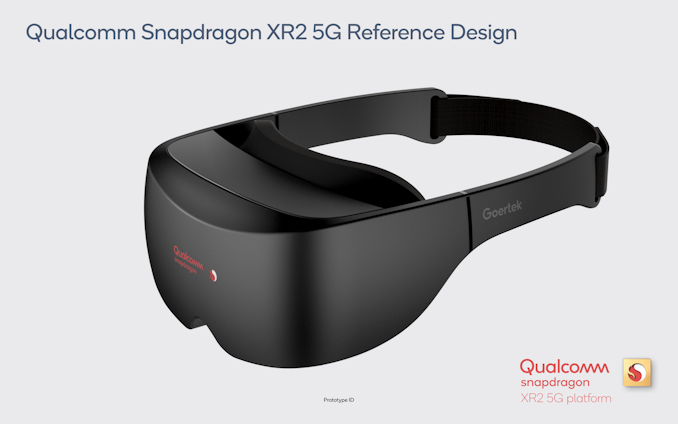
Today Qualcomm is announcing that it will be reintroducing its Reference Design Programme for its upcoming XR2 chip for AR/VR/XR headsets. The company stated that after the success of its XR1 equivalent programme, they would be initiating with potential customers earlier in the cycle this time around in a similar way to how they approach smartphone vendors with its new handset SoCs.
The plan is to offer a unit that provides dual 2K LCD panels, 5G and 60 GHz support, no cables, 7 cameras, and the full software stack. This includes a full rundown of product design and hardware schematics, bill-of-materials details, layout details, and the appropriate SDKs to enhance and develop new models.
Reference Designs are a common feature in many industries, such as smartphones and laptops – the SoC manufacturer will give its partners an ‘example’ device, usually targeted at a high-end customer, such that the customer can use it as a base for any product they want to design themselves. Some vendors choose to use the reference design almost completely, while others ignore it, but the idea is that vendors can either provide a system with a quick time to market or take a bit longer and offer differentiation or a design at a different price point. Qualcomm’s XR2 reference design will enable this for the latest generation of AR/VR/XR headsets.
Qualcomm’s previous XR1 platform was very successful, with over 30+ designs reaching market using the Snapdragon platform. The goal here for XR2 is to go beyond that, by offering peak functionality that includes up to 3K*3K per eye, 8K60 video decode, better object detection and occlusion algorithms, 3D audio, foveation with eye-tracking and variable rate shading.
Customers interested in Qualcomm’s XR2 Reference Design platform should get in contact with their local Qualcomm representative.


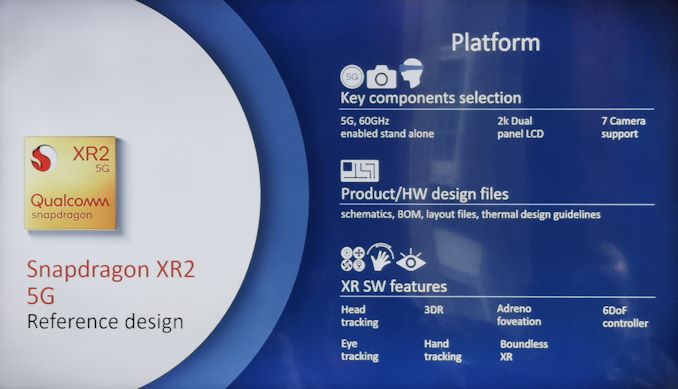
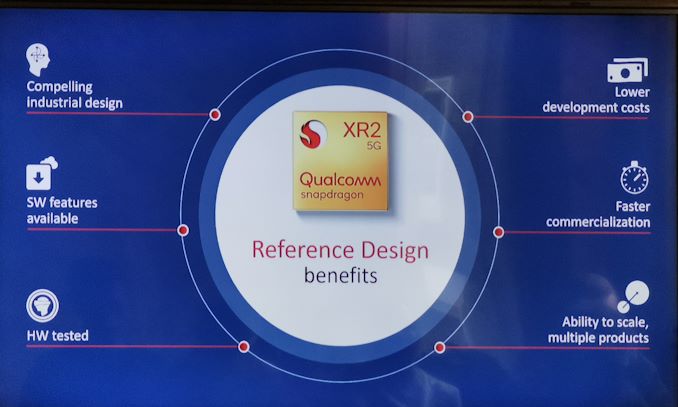
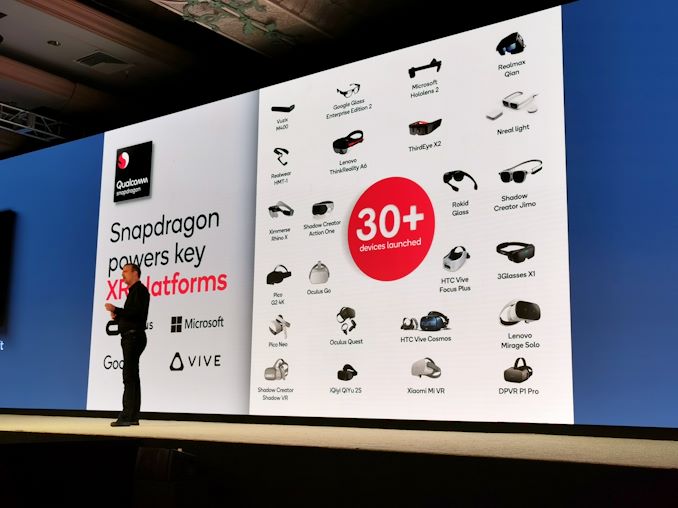
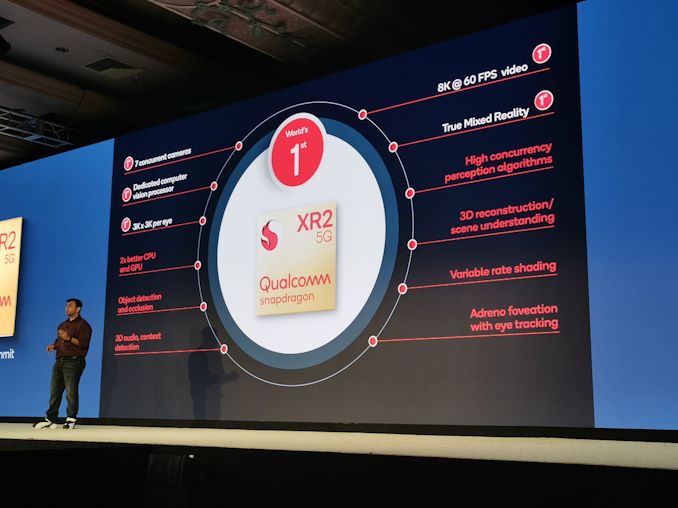








22 Comments
View All Comments
yeeeeman - Tuesday, February 18, 2020 - link
Hope this shit will have the same fate as 3D phones.nandnandnand - Tuesday, February 25, 2020 - link
Why? Would it make you even more antisocial?edzieba - Tuesday, February 18, 2020 - link
As far as I am aware, nobody has actually shipped a HMD based on the XR1 platform. Current non-devkit standalone platforms (e.g. Hololens, Oculus Quest and Go, HTC Vive Focus, Lenovo Mirage Solo) either use non-Qualcomm processors, or use use their own platform on a Snapdragon processor.valinor89 - Tuesday, February 18, 2020 - link
I have been searching and found the Vuzix M400, Glass Enterprise Edition 2 from google etc. They are not a consumer product, so I guess the XR1 platform was not exactly cheap to implement.PaulHoule - Tuesday, February 25, 2020 - link
Maybe it's just me, but "XR" has the stench of death about it."VR" hardware is "good enough" for many purposes but the content is not there; it will never be the time suck that browsing the web, watching TV, reading, or playing conventional video games because you can't stand long sessions. The hardware is expensive, but if there was enough content it might seem look a good investment.
"AR" is not good enough because of the problems that Karl Guttag writes about on his blog: the optics are a tough problem.
"XR" seems to have been invented to fit in somewhere between "The Race to 5G" and "The Race to AI". I imagine that executives in boardroom are asking "What is our XR strategy?" Just as the chemistry department birthed a materials science center, and then a nanotechnology center, a new name can convince (some) people that something new is going on.
nandnandnand - Tuesday, February 25, 2020 - link
If a company can make a wide field of view AR display that can be switched into a VR mode by putting a cover on it to block light, they should try it. There is already effort underway to flatten VR headsets and retinal projection could accomplish both AR and VR in a compact form factor.If it can be made indistinguishable from ordinary glasses or sunglasses (yes, including cameras), you can convince people to wear the AR device in public and switch it to VR mode when they are at home or somewhere they won't get mugged.
PaulHoule - Tuesday, February 25, 2020 - link
The "AR device that can be covered" will be a poorly performing VR device because the AR device has much more complex optics in the combiner.If you want to augment your world here and now, the birdbath architecture outperforms the diffraction waveguide at low cost. The only drawback is that it is ugly.
To get people excited about the platform you have to be able to demo it, show it off on a sales floor, put it on somebody's head at the art exhibit. The game developers might have three of them for a team of ten such as artist, coder, tester and want to be able to show the game off easily to visitors.
For that, you have to have a headset that works with or without glasses. That's the minimum viable product. Once people are sold on the platform, then the market opens up for small/light/personalized.
Alistair - Tuesday, February 25, 2020 - link
There's no point in calling the death of VR for a second time yet. We haven't even had major game companies go all in on it yet. We've yet to see PSVR2, or a Nintendo device, for example.PeachNCream - Tuesday, February 25, 2020 - link
At this point in the VR revival, that sort of thing really should have happened already in order to keep the industry healthy. It was in 2012 that Occulus first opened their Kickstarter which was, arguably, the beginning of enthusiam for a new generation of VR products. The lack of major effort by hardware manufacturers, console producers, and game developers across the board over the last half decad says quite a bit.PaulHoule - Tuesday, February 25, 2020 - link
I don't think VR is "dead" but I also don't think the problem with VR is with the displays. Tracking could be better and more universal. Thus no need for a PSVR2.Beat Saber is the Pong of VR. Somebody might put together a bestselling title if they can get the level of storytelling up to the level of Crazy Climber, never mind a Nep game. One of the most intriguing possibilities for VR is sharing a space with simulated characters, who can provoke strong feelings if they get too far from or too close to you.
If XR is the ecosystem of parts and systems software shared by AR and VR than it is a going concern. The silicon is mostly the same.
"XR" is the walking dead from a marketing perspective, however, because customers right now don't know what the value is in AR or VR and "XR" doesn't give any clarity.